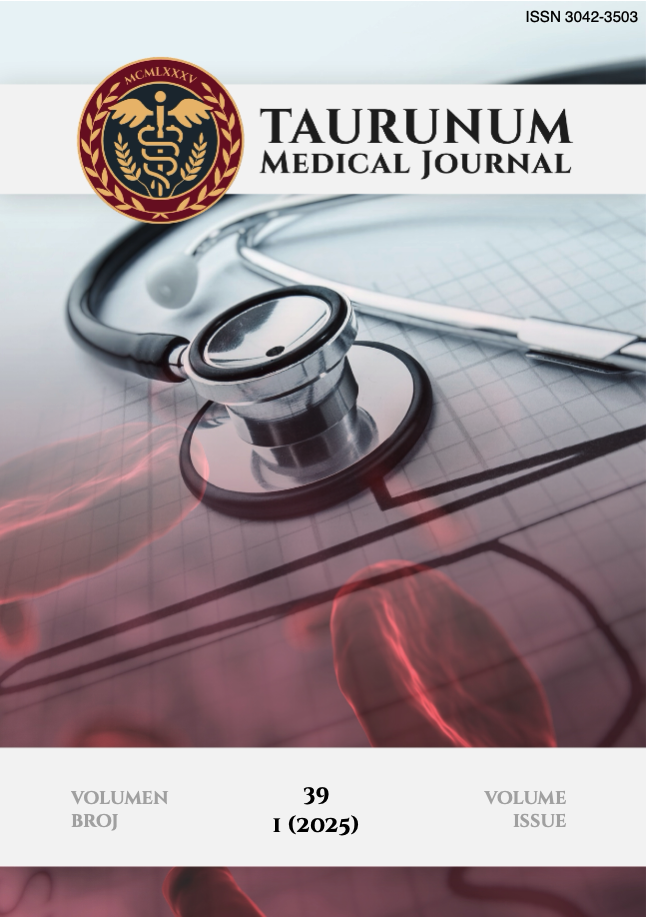Current issue

Volume 39, Issue 1, 2025
Online ISSN: 3042-3511
ISSN: 3042-3503
Volume 39 , Issue 1, (2025)
Published: 31.03.2025.
Open Access
Welcome to Issue 39, No. 1 – the first of our two annual publications for this year. Inside, you'll find a curated selection of articles. Start your year with the essential knowledge and perspectives offered in this timely edition
All issues
Contents
31.03.2025.
Review Article
The indications for admission to the Department of Internal Medicine Intensive Care at the Clinical Hospital Center Zemun
Intensive Care Units (ICUs) are inevitably positioned at the top of the treatment pyramid for patients with acute and life-threatening conditions according to current medical practice. The number of critically ill patients has dramatically increased owing to better treatment quality, a longer life expectancy, and the impact of modern technologies. This has raised concerns regarding the intensive care and surveillance of these patients. Compared to colleagues in non- intensive care services, the profiles of physicians and nurses/technicians working ICUs differ considerably in their patients’ approach and skills performance. Specific indications for ICU admission have been established due to the restricted number of available ICU beds. These patients are transferred to semi-intensive care (SICUs) services within the departments that correspond to their pathology once their critical condition has stabilized. The ICU patients cannot be fully recovered, but can have their conditions stabilized to the point where they may receive further treatment outside of the ICU. Thus, ICUs and SICUs represent one functional unit. The aim of this review is to present the indications for admission to the Department of Internal Medicine ICU of the Clinical Hospital Center Zemun.
Bojan Mitrović, Ratko Tomašević, Saša Pančevački, Milica Radović, Svetozar Mijušković, Zoran Gluvić
01.12.2020.
Case Report
Fatal idiopathic syndrome of inappropriate antidiuresis: two case reports
Hyponatremia is an electrolyte disorder frequently encountered in clinical practice. The first step in the diagnostic evaluation of hyponatremia is the volume assessment (clinical estimation of hypo/hypervolemia presence). In the cases of euvolemic hyponatremia, followed by decreased plasma osmolality (<275mOsm/kg) with urine osmolality >100mOsm/kg, urine sodium >30mmol/L along with normal intake of salt and water, preserved pituitary, adrenal, thyroid, adrenal function as well as no recent use of diuretics, syndrome of inappropriate diuresis (SIAD) is diagnosed. In symptomatic, especially acute hyponatremia, careful and gradual substitution by 3 (10) % sodium-chloride infusion is advised with liquid intake restriction, the administration of demeclocycline, urea, or vaptans, as well as causal treatment of SIAD. SIAD is often transient and etiologically clear. In this paper, we present two cases with idiopathic, chronic SIAD with poor outcomes. During the diagnostic follow-up, the cause of SIAD was not found. The autopsy finding was also adverse. In most cases, euvolemic hyponatremia in patients with chronic, idiopathic SIAD is an ominous sign.
Zoran Gluvic, Mitrovic Bojan, Pancevacki Sasa, Lackovic Milena, Samardzic Vladimir, Milan Obradovic, Isenovic R Esma



